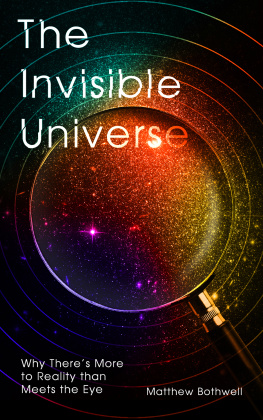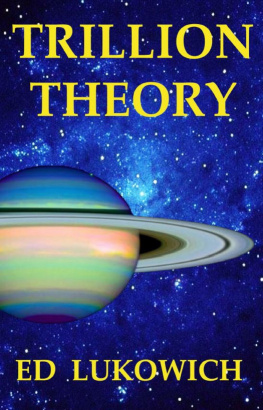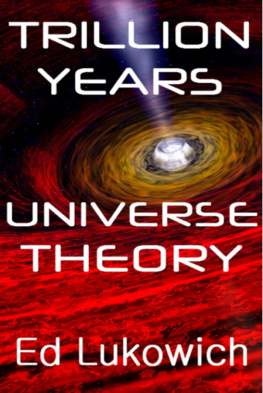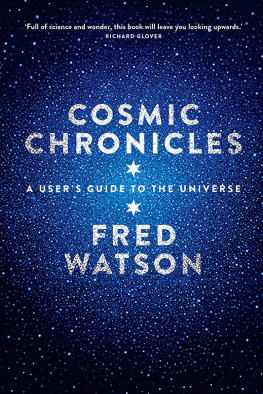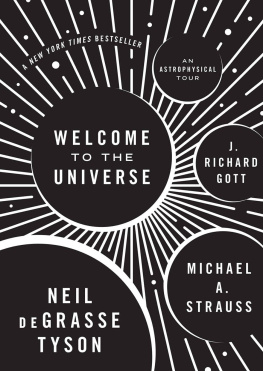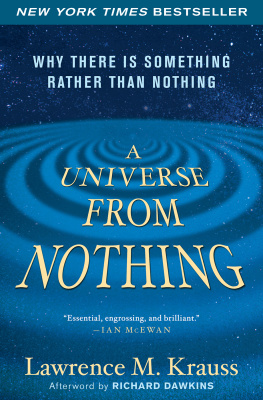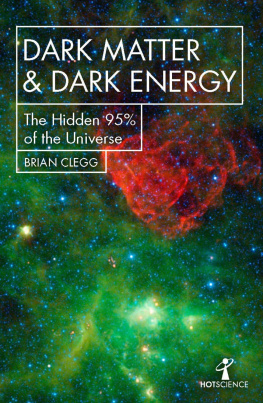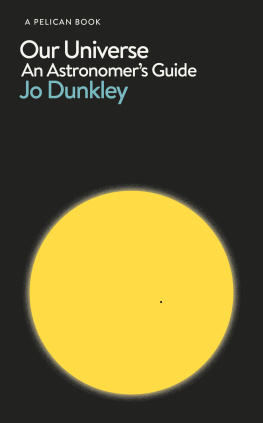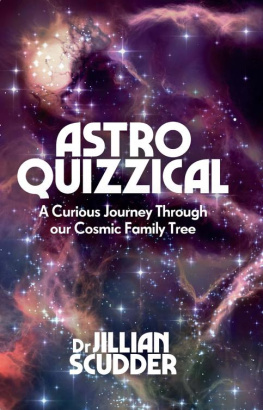Acknowledgements
Im sitting down to write this nearly a year after I first put pen to paper, and exactly one year to the very day, it turns out! after the UK announced that it would be going into a national lockdown as a result of the Covid-19 pandemic. It would be something of an understatement to say that this has been a very strange year. I am more thankful than ever to my friends, family and loved ones who have all supported each other through this incredibly bizarre and difficult time in our lives.
I always imagined writing a book to be a somewhat solitary affair, but now I have got to the end of one its abundantly clear that none of this would have been possible without a small army of incredibly supportive and wonderful people. So, here goes.
Im incredibly grateful to all my colleagues far too many to name in Cambridge and beyond, who have made it such a joy to work as a professional astronomer over the past decade and a bit. Its an absolute privilege to work in this area of science, and to participate in some small way in humanitys long quest to understand the Universe we live in.
I am enormously grateful to Sally Davies at Aeon Magazine , who offered me the opportunity to write a popular article about my research. Massive thanks also go to my agent, Tessa David, who read my Aeon article and helped me turn my vague interest in science writing into something more concrete.
Thanks to my editor, Sam Carter, and everyone else at Oneworld Publications Rida Vaquas, Matilda Warner, Holly Knox, Paul Nash, Laura McFarlane, Mark Rusher, Lucy Cooper, Julian Ball, Francesca Dawes and Ben Summers. Thanks also to Kathleen McCully for copyediting.
Thanks to the people who read early drafts of the book and gave valuable feedback Emily Watton, Joy Martin, and especially Carolin Crawford, my science communication mentor and erstwhile boss, who was kind enough to cast an academic reviewers eye over my manuscript. It goes without saying, of course, that any mistakes that have slipped through the cracks are entirely my own.
Finally, thank you to my parents, for providing such an unquenchable well of love and support throughout my entire life and career. Without them, all of this would be a distant daydream. I really cannot thank them enough.
What is light?
Thinking is difficult at high altitude. Here in the control room of the Very Large Telescope, in the Atacama Desert nearly three kilometres above sea level, breathing the thin air provides you with what feels like a persistent hangover. Theres no way around it: the human body simply didnt evolve to function on top of mountains. This is where I found myself in the spring of 2012, fighting the mental fog and the pounding headache, doing my best to carry out a carefully planned sequence of observations. Luckily for me I had made the schedule earlier, back in the blissfully oxygen-rich atmosphere at the foot of the mountain.
The headache was worth it, for one simple reason. Appearing on the computer screen in front of me was something no human being had ever seen before: a relic of the primeval Universe, hanging there in the ancient darkness. Just by looking at this image I was reaching across a vast ocean of cosmic time, peering back through billions of years into an alien cosmos that existed long before planet Earth formed. If this feels surreal, know that you wouldnt have to go back very far in human history before this paragraph would start sounding more like magic than science. To be totally honest, it feels more than halfway to being magic to me, even now. How is this trick time travel, essentially made possible?
The answer, of course, lies in the properties of light. Light, which zips around the Universe at an incomprehensible speed, brings messages from the past and is our tool through which we understand our cosmos. Almost everything we know about our place in the Universe is built on a foundation of light.
Given that this book promises to be a guide to the invisible Universe, it might seem strange to start by extolling the importance of light, which by definition, you would think, reveals a thoroughly visible Universe. But we shouldnt be fooled into thinking that the light we see is the end of the story. T. S. Eliot said that light was the visible reminder of invisible Light a line which beautifully describes the perspective of modern astronomy. The ancient galaxy I was observing above, in my altitude-addled state, was being captured in infrared light a snapshot of the Universes deep past that would have been completely invisible to my eyes without the aid of modern technology. As we shall see, we are surrounded by a universe of invisible light which reveals to astronomers a rich storehouse of cosmic wonders that would have been completely unimaginable to our ancestors.
In this introductory chapter, I want to talk about light. Light is undoubtedly one of the wonders of the Universe a wonder which we are so familiar with in our everyday lives we can easily overlook how deeply strange it really is. I also want to introduce a handful of ideas about how light behaves these ideas will make up a toolbox of concepts that we can take with us on our journey through an invisible cosmos.
How does light work?
The basic idea behind our modern understanding of light is fairly simple. Light sources like bulbs, fires and stars produce waves of energy which then enter our eyes, allowing us to see things. Sometimes these waves enter our eyes directly, in which case we see the light source itself, and sometimes these waves reflect off other objects. This incredibly basic idea is so fundamentally embedded in our worldview its hard to imagine anyone describing it differently. But its worth remembering that the picture of light we take for granted was reached only after centuries of debate; many brilliant scientists and philosophers throughout history believed things about light which now seem downright ludicrous. But if we want to understand how our modern model of light came about, its worth looking at the road we took to get here.
The ancient Greek pre-Socratic philosophers were, in many ways, the first scientists. They were the first to grapple with questions that we would now call scientific: asking where things come from, what things are made of, and how reality actually works on a deep-down, fundamental level. And one of the things worth explaining was, of course, light.
The philosopher Democritus (460370 bce ) was amazingly prescient when it came to anticipating modern science. Amongst other things, he was the first to suggest that all matter is composed of tiny atoms. At the same time, though, he proposed a theory of light and vision which sounds extraordinarily bizarre to modern readers. He proposed that all objects are constantly expelling ghostly versions of themselves called eidola images which fly through the air, shrinking as they go, until they eventually enter our eyes. If you look at a cow, you are able to see it because a thin layer of cow peeled off the original and floated into your eye. The idea that objects are constantly losing thin layers of themselves rather neatly explains erosion, of course. If this seems crazy, you might regain some sympathy by trying to come up with a thought experiment that disproves this idea without resorting to scientific evidence that would have been unavailable at the time. Its not as easy as you might imagine.
Competing against Democritus theory of light were a range of philosophical heavyweights including Pythagoras, Euclid and Plato. This other school of thought believed something equally strange to modern ears: that light was projected outwards from our eyes. These light beams, they supposed, interact with the world and bring information back to us, rather like a bat using echolocation. Again, this idea seemed to have plenty of supporting evidence: cats eyes seem to illuminate at night (allowing them to see in the dark), and if you poke your eyeball hard enough it seems to produce flashes of light.
Next page
